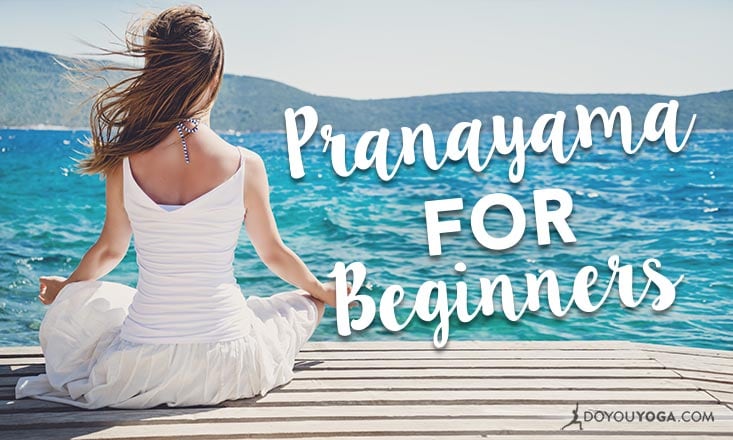Pranayama, the practice of using the breath to soothe the fluctuations of “chitta” or the active thinking mind, invites you to be mindful of life’s most important function: breathing.
The awareness of it rarely captures our attention, but it continues to flow on an average of 15-20 times per minute (according to the American Lung Association)—that’s 20,000 breaths per day!
Beginners and advanced practitioners alike will benefit from incorporating some of the following pranayama for beginners techniques onto the yoga mat or anywhere when life gets hectic. All you need is a few minutes, a comfortable seat or pose such as siddhasana, and a space free from all distractions. If you’ve never really ‘found’ your personal meditation practice, you might benefit from taking part in the free 30 Day Meditation Challenge. All you need is a few minutes, a comfortable seat or pose such as siddhasana, and a space free from all distractions.
1. The Great Storyteller: The Natural Breath
Simply breathing and noticing the natural breath precedes any pranayama, and is a necessary step for ALL practitioners.
The breath is the only voluntary AND involuntary body function in the body that reveals your unconscious emotional, mental and physical patterns. We can only heal and transform these patterns once we choose to recognize them. Otherwise, your breath will continue telling your story whether you choose to listen or not.
Once you realize that you can influence the depth, rhythm and sound of the breath, you will understand the power of pranayama. Try this right now:
- Breathe in, and notice thoughts as they arise.
- Breathe out, and notice thoughts as they dissipate.
- Give yourself permission to release your attachment to your thoughts during this time of meditation.
- Return to your life with a calm and clear open mind.
2. A Moment of SIlence: Sahita Pranayama
The resting state known as kumbhaka exists in between the active processes of inhalation and exhalation. Practicing this method increases mental and physical endurance, and places the emphasis on stillness—as long as there is no attempt to hold the breath with force and create even more anxiety.
Here’s how to gain the greatest benefit without causing more stress:
- Inhale with a natural and focused breath and pause
- Hold the breath, not to the point of discomfort or struggle, but long enough to settle into the stillness
- Exhale the natural breath and pause
- Hold the breath, notice the stillness
- Repeat for up to 5 minutes and take Savasana
3. Busy as a Bee? Try Bhramari!
Bhramari translates as “large bee.” You may want to reserve this calming pranayama when you have a few moments alone because this can get pretty loud!
You will achieve the greatest benefit when you create the most audible sound, because the vibrations send a soothing wave throughout the nervous system—creating a homeostasis of mind and body.
- Inhale completely through both nostrils
- Exhale, producing the buzzing sound of the bee
- Repeat up to 5 minutes and take rest in Savasana
4. Trust Your Gut with Dirga
Also known as 3-Part Breath, this technique involves breathing sequentially:
- beginning from the diaphragm filling up the abdomen
- moving into the lungs
- lifting up into the upper chest
Dirga Pranayama is most accessible for beginners as it can be practiced by lying down with a thick blanket or sandbag over the belly, allowing it to rise during inhalation and fall during exhalation.
5. ROAR with Lion’s Breath
Simhasana or Lion’s Breath helps to strengthen the muscles in the throat in preparation for more advanced pranayama practices.
Beginners usually feel a little shy about making the Lion’s face, but this pose releases inhibitions, allows one to find their true voice, and helps to get excess tension off the chest.
Here’s how to unleash the beast:
- Settle into an upright kneeling position, placing your hips on your thighs and resting your palms face down (note: this pose can be executed from most other yoga positions)
- Inhale deeply through the nose and as you exhale, open your mouth wide, stick out your tongue and open the eyes wide, letting all of your breath go with an audible “HA” sound, keeping your drishti set towards the third eye
- Repeat 2-3 times and follow with a resting position such as Child’s pose or Savasana
Typically, our breath receding into the background and out of focus also reflects the way our lives become; shallow, barely audible, and easily taken for granted.
Let’s show up on the mat to seek deeper meaning, speak our voice from a powerful center, and to appreciate ourselves and others. Inhale peace. Exhale peace.


